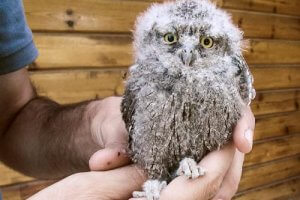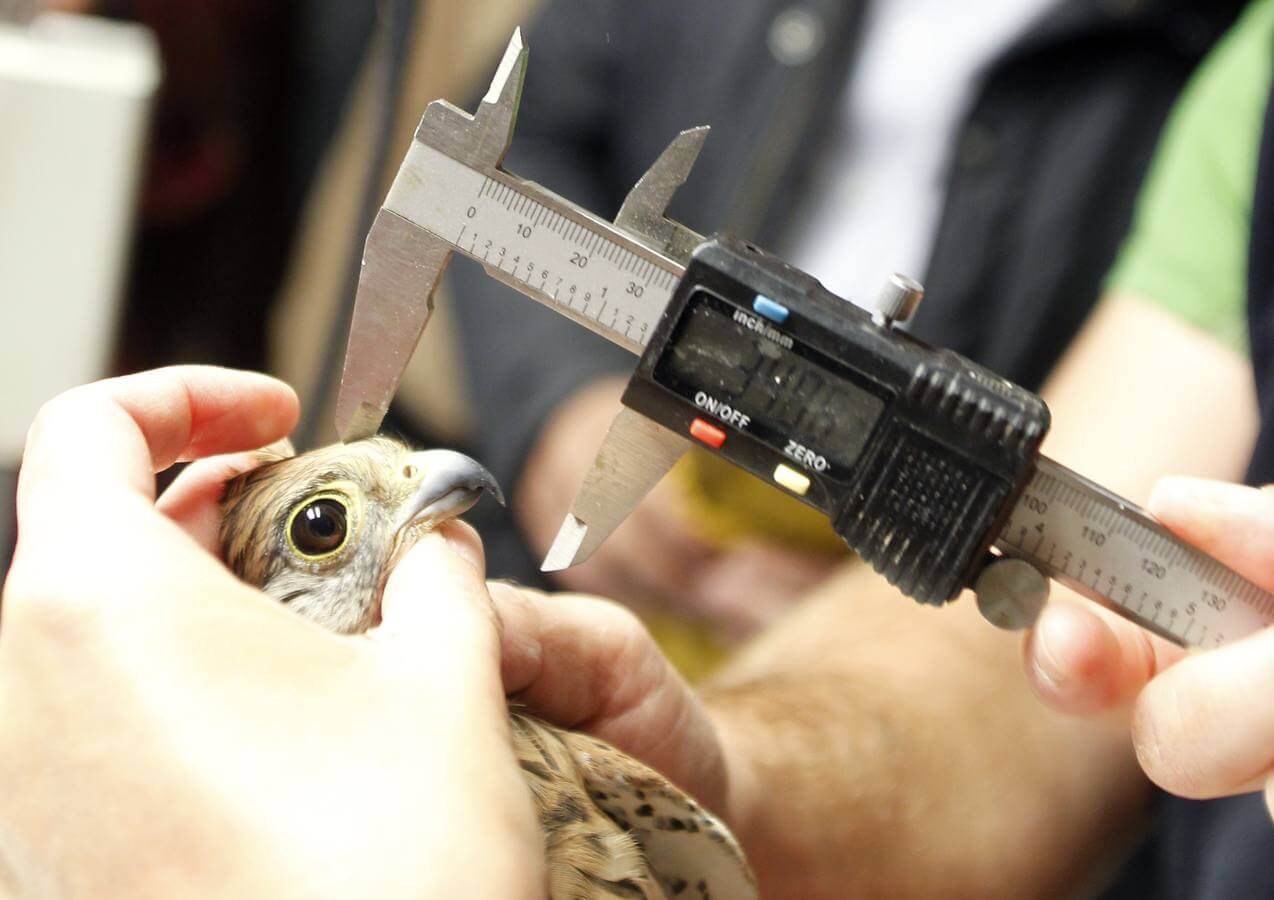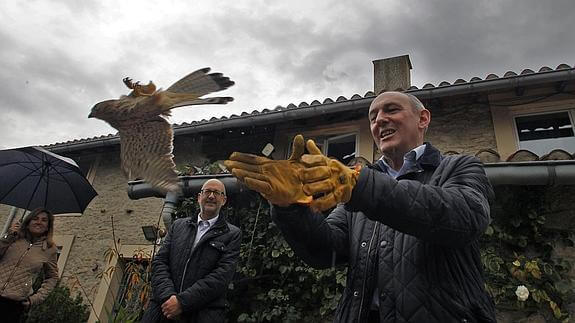Mártioda Wildlife Hospital and Rehabilitation Center

Whether wild or domesticated, all animals have a right to a good quality of life. While there are still many animal rights issues, such as hunting or the illegal wildlife trade, it’s not all doom and gloom. Today, we want to tell you about Mártioda wildlife hospital, located in the North of Spain.
Mártioda wildlife hospital: from zoo to hospital

Around 20 years ago, Mártioda was a zoo, and home to a multitude of different species. People of all ages flocked to see them, but it was especially popular with children. But for all its popularity, the zoo closed its doors to visitors many years ago.
Located in the Sierra de Badaya mountain range, Mártioda has now been open for over 40 years. Today, the facilities are used for treating all kinds of different animals. Since reopening as a hospital, staff have treated over 11,500 patients: 60% birds, 25% reptiles and 15% mammals.
600 sick and injured animals pass through the doors of Mártioda wildlife hospital every year. The majority of “patients” arrive at the hospital after being hit by a car, shot, poisoned or injured by lawn mowers. Of course, they also treat animals suffering from natural ailments.
75% of calls to attend an animal are made by the general public, which shows that people are becoming increasingly aware of their environment and all the animals around them. The Mártioda wildlife hospital, the largest of its kind in Spain, gets some truly amazing results, and deserves recognition for its work.
Mártioda wildlife hospital: birds and botulism

In the summer of 2014, the Martioda Wildlife Rehabilitation Center (as it is officially known) dealt with an outbreak of avian botulism. The majority of birds affected were ducks from the Basque region. Within three weeks, the hospital was caring for around a hundred sick ducks.
Avian botulism is often fatal, causing paralysis in the legs, wings and neck. Those suffering from the disease are unable to move, swim, or keep their heads up. Any local birds found suffering from the disease were taken to Mártioda’s intensive care unit, which was specially designed for just this type of emergency.
Silence reigns in the room housing the hospital’s weakest patients. As the birds are almost too weak to move, the vets and nurses feed them by hand. If they survive the first night, their chances of survival increase greatly.
After a few days in the ICU, the birds slowly start to regain their strength. Eventually, staff move them to an outdoor enclosure for the final stage of their recovery. This enclosure was full of mallards gradually beginning to get back on their feet.
Next to this first enclosure is a second, smaller one, where now-healthy ducks, swans and spoonbills await release.
In another area of the hospital, there are more birds. Many of them arrived as chicks, after they had somehow became separated from their mothers. Staff at the center act as parents to these chicks, feeding them using tweezers or other objects designed to mimic their mothers’ beaks. But they always try to keep their distance. The idea is that the birds remain wary around them, and around humans in general.
Day to day life in Mártioda
But its not just birds that come to Mártioda. You can also find wild boar, deer, roe deer, hedgehogs, weasels, foxes… Or, basically, any other native species that needs their help. Once they are fully recovered, they are released back into their natural habitat.
However, Mártioda wildlife hospital also treats non-native species which humans have introduced to the region. This includes animals such as American or European mink. Species such as turtles, snakes and other exotic animals go to specialist centers for expert treatment.
Whether wild or domesticated, all animals have a right to a good quality of life. While there are still many animal rights issues, such as hunting or the illegal wildlife trade, it’s not all doom and gloom. Today, we want to tell you about Mártioda wildlife hospital, located in the North of Spain.
Mártioda wildlife hospital: from zoo to hospital

Around 20 years ago, Mártioda was a zoo, and home to a multitude of different species. People of all ages flocked to see them, but it was especially popular with children. But for all its popularity, the zoo closed its doors to visitors many years ago.
Located in the Sierra de Badaya mountain range, Mártioda has now been open for over 40 years. Today, the facilities are used for treating all kinds of different animals. Since reopening as a hospital, staff have treated over 11,500 patients: 60% birds, 25% reptiles and 15% mammals.
600 sick and injured animals pass through the doors of Mártioda wildlife hospital every year. The majority of “patients” arrive at the hospital after being hit by a car, shot, poisoned or injured by lawn mowers. Of course, they also treat animals suffering from natural ailments.
75% of calls to attend an animal are made by the general public, which shows that people are becoming increasingly aware of their environment and all the animals around them. The Mártioda wildlife hospital, the largest of its kind in Spain, gets some truly amazing results, and deserves recognition for its work.
Mártioda wildlife hospital: birds and botulism

In the summer of 2014, the Martioda Wildlife Rehabilitation Center (as it is officially known) dealt with an outbreak of avian botulism. The majority of birds affected were ducks from the Basque region. Within three weeks, the hospital was caring for around a hundred sick ducks.
Avian botulism is often fatal, causing paralysis in the legs, wings and neck. Those suffering from the disease are unable to move, swim, or keep their heads up. Any local birds found suffering from the disease were taken to Mártioda’s intensive care unit, which was specially designed for just this type of emergency.
Silence reigns in the room housing the hospital’s weakest patients. As the birds are almost too weak to move, the vets and nurses feed them by hand. If they survive the first night, their chances of survival increase greatly.
After a few days in the ICU, the birds slowly start to regain their strength. Eventually, staff move them to an outdoor enclosure for the final stage of their recovery. This enclosure was full of mallards gradually beginning to get back on their feet.
Next to this first enclosure is a second, smaller one, where now-healthy ducks, swans and spoonbills await release.
In another area of the hospital, there are more birds. Many of them arrived as chicks, after they had somehow became separated from their mothers. Staff at the center act as parents to these chicks, feeding them using tweezers or other objects designed to mimic their mothers’ beaks. But they always try to keep their distance. The idea is that the birds remain wary around them, and around humans in general.
Day to day life in Mártioda
But its not just birds that come to Mártioda. You can also find wild boar, deer, roe deer, hedgehogs, weasels, foxes… Or, basically, any other native species that needs their help. Once they are fully recovered, they are released back into their natural habitat.
However, Mártioda wildlife hospital also treats non-native species which humans have introduced to the region. This includes animals such as American or European mink. Species such as turtles, snakes and other exotic animals go to specialist centers for expert treatment.
This text is provided for informational purposes only and does not replace consultation with a professional. If in doubt, consult your specialist.








